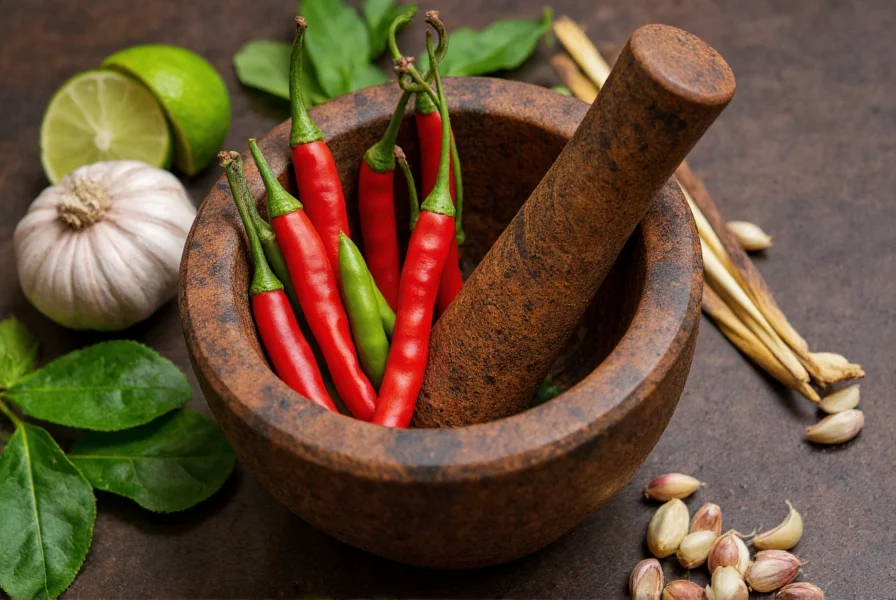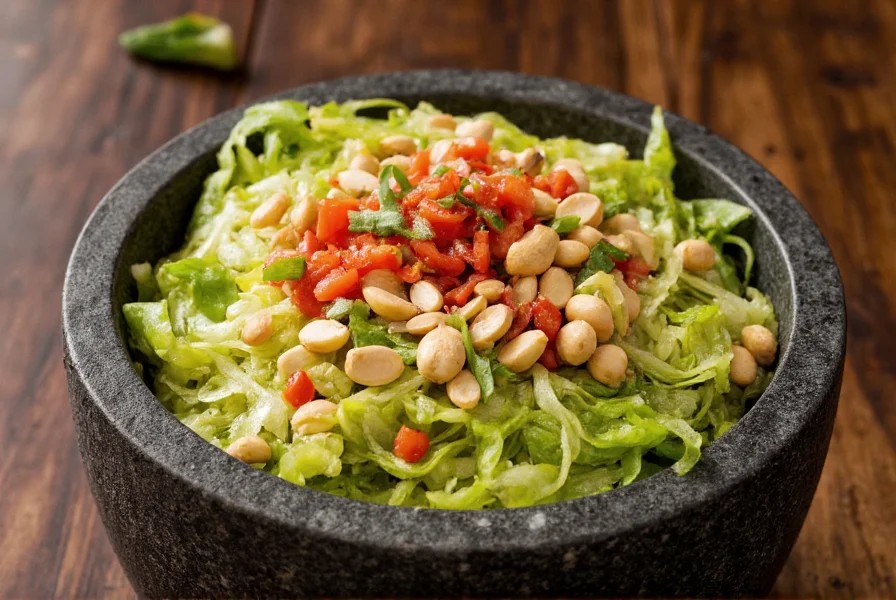Thai cuisine's fiery reputation centers around its masterful use of chilies, which serve as both flavor enhancers and cultural markers. Understanding a Thai chili menu goes beyond mere heat tolerance—it reveals the nuanced relationship between spice, balance, and regional traditions that define authentic Thai cooking. This guide unpacks what to expect when encountering chili-focused offerings at Thai restaurants worldwide.
The Cultural Significance of Chilies in Thai Cooking
Chilies arrived in Thailand through Portuguese traders in the 16th century and quickly became integral to the national palate. Unlike many cuisines where spice is an afterthought, Thai cooking treats chilies as essential flavor components that interact with sweet, sour, and salty elements. The phrase prik khing ( chili curry) appears frequently on authentic menus, signaling dishes where chilies form the flavor foundation rather than just providing heat.

Common Chili Varieties in Thai Cuisine
While Western menus might simply say "spicy," authentic Thai restaurants distinguish between several chili types:
| Chili Type | Thai Name | Scoville Units | Common Menu Appearances |
|---|---|---|---|
| Bird's Eye Chili | Prik Kee Noo | 50,000-100,000 | Pad Kra Pao, Som Tum, Nam Prik |
| Chili Garlic Paste | Nam Prik Pao | 15,000-30,000 | Stir-fries, dipping sauces |
| Long Green Chili | Prik Yuak | 500-5,000 | Curry pastes, soups |
| Dried Red Chili | Prik Haeng | 30,000-50,000 | Curry pastes, chili oil |
Decoding Thai Restaurant Menu Terminology
Authentic Thai menus use specific terminology to indicate chili presence and heat levels. Recognizing these terms helps diners navigate spice expectations:
- Prik - General term for chili (often appears in dish names)
- Phet - Spicy (frequently modified with intensity indicators)
- Phet nit noi - Mild spicy
- Phet paet - Medium spicy
- Phet mak mak - Very spicy
- Nam Prik - Chili-based dipping sauce (appears in many regional specialties)
Many Thai restaurants use chili symbols (🌶️) next to dishes, with one to five peppers indicating relative heat. The five-pepper designation typically means "Thai spicy"—a level that often surprises even heat-tolerant Western diners.
Signature Dishes on a Thai Chili Menu
Certain dishes consistently appear on Thai menus featuring prominent chili components. These aren't just "spicy options" but represent fundamental preparations where chilies play essential flavor roles:
Pad Kra Pao (Holy Basil Stir-fry)
Often called "drunken farmer's stir-fry," this dish features minced meat with holy basil, garlic, and bird's eye chilies. Authentic versions include a raw egg on top and use chilies as both heat source and flavor component. When ordering, specify your preferred heat level as phet modifications.
Som Tum (Green Papaya Salad)
This Northeastern Thai specialty balances shredded green papaya with chilies, lime, fish sauce, and palm sugar. The number of chilies determines whether it's som tum thai (Thai-style, milder) or som tum lao (Lao-style, extremely spicy). Many menus indicate chili count directly.
Gaeng Som (Sour Orange Curry)
Distinct from coconut milk-based curries, this Southern Thai specialty uses fresh chilies and shrimp paste for its characteristic heat and sourness. The chili presence is non-negotiable in authentic preparations, making it a true test of spice tolerance.

Navigating Spice Levels as a Western Diner
Understanding the gap between "Thai spicy" and Western expectations prevents unpleasant surprises. Consider these practical tips when ordering from a Thai chili menu:
- Start with phet nit noi (mild) even if you consider yourself heat-tolerant
- Ask about regional differences—Central Thai dishes tend to be milder than Northeastern or Southern preparations
- Request mai ao prik (no chilies) for dishes where spice isn't essential to the flavor profile
- Understand that "medium" on Thai menus often equals "very hot" by Western standards
- Have cooling accompaniments ready—sticky rice, cucumber, or Thai iced tea help balance heat
Many authentic Thai restaurants now include heat level explanations on their menus, recognizing that international diners may not understand traditional Thai spice expectations. Look for menus that specify phet thai (Thai spicy) versus phet farang (foreigner spicy) designations.
Regional Variations in Thai Chili Usage
Thailand's regional cuisines feature distinct approaches to chilies:
- Central Thailand: Balanced heat in dishes like Pad Kra Pao, with chilies complementing other flavors
- Northeastern (Isaan): Extreme heat in Som Tum and Larb, reflecting Lao culinary influences
- Southern Thailand: Intense, complex heat in curries using fresh and dried chilies
- Northern Thailand: More moderate heat with distinctive chili dips like Nam Prik Noom
When examining a Thai chili menu, notice regional designations that indicate expected spice profiles. Restaurants specializing in specific regional cuisines often maintain authentic heat levels that differ significantly from generic "Thai restaurant" expectations.
Conclusion: Embracing the Thai Chili Experience
A Thai chili menu represents more than just spicy options—it showcases the integral role chilies play in Thai culinary identity. By understanding the terminology, regional variations, and cultural context behind chili usage, diners can better appreciate these dishes beyond mere heat measurement. Whether you're a spice enthusiast or prefer milder flavors, knowing how to navigate Thai chili menus ensures an authentic and enjoyable dining experience that respects Thailand's rich culinary heritage.
What does 'phet mak mak' mean on a Thai menu?
'Phet mak mak' translates to 'very spicy' in Thai. This designation indicates the dish will be prepared at authentic Thai heat levels, typically using multiple bird's eye chilies. Western diners should approach 'phet mak mak' dishes with caution as they often exceed typical Western spice expectations.
How can I tell if a Thai restaurant has an authentic chili menu?
Authentic Thai restaurants typically specify chili types (like prik kee noo), use Thai terminology for heat levels (phet nit noi, phet mak mak), and indicate regional origins of dishes. Menus that simply use 'spicy level 1-5' without cultural context are often adapted for Western palates rather than representing traditional Thai menu practices.
Are all Thai dishes spicy by default?
No, not all Thai dishes are spicy. While chilies feature prominently in many preparations, Thailand has numerous mild dishes like Khao Soi (Northern curry noodle soup) and Massaman Curry. Authentic menus allow customization of spice levels, and many traditional dishes like Tom Kha Gai (coconut chicken soup) are naturally mild unless chilies are specifically added.
What's the difference between Thai bird's eye chilies and regular jalapeños?
Thai bird's eye chilies (prik kee noo) range from 50,000-100,000 Scoville units, making them 5-20 times hotter than jalapeños (2,500-8,000 Scoville units). They also have a distinct floral, citrusy flavor profile compared to jalapeños' grassier notes. This intensity difference explains why dishes using authentic Thai chilies feel significantly hotter than similar preparations using jalapeños.
How do I request less spice without offending the chef?
Politely request 'phet nit noi' (mild spicy) or 'mai ao prik' (no chilies) when ordering. Most authentic Thai restaurants expect and accommodate spice preferences. Adding 'ka' (for women) or 'krub' (for men) shows cultural respect. Understanding that spice customization is normal in Thailand—not a criticism of authenticity—helps frame the request appropriately.










 浙公网安备
33010002000092号
浙公网安备
33010002000092号 浙B2-20120091-4
浙B2-20120091-4